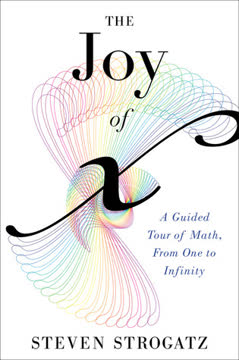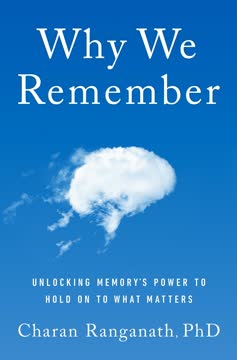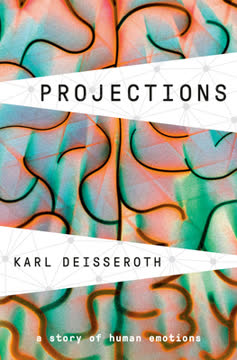Key Takeaways
1. The Mind's Interwoven Tapestry: Psychiatry, Science, and Imagination
Somehow three independent perspectives, psychiatry and imagination and technology, together can frame the conceptual space needed—perhaps because they have little in common.
A Unified Approach. Understanding the human mind requires a unique blend of perspectives: the clinical insights of psychiatry, the imaginative depth of literature, and the precise tools of neuroscience. The author's journey into psychiatry, sparked by a profound encounter with a schizoaffective patient, revealed the limitations of any single discipline in grasping the true nature of human suffering and internal experience. This interdisciplinary lens allows for a richer, more complete picture of the mind's intricate workings.
Bridging Disciplines. The author, Karl Deisseroth, a pioneer in optogenetics and hydrogel-tissue chemistry, emphasizes that even advanced scientific technologies alone are insufficient to describe the human internal experience. By integrating patient narratives, literary allegories, and cutting-edge brain research, the book seeks to illuminate how the mind's "warp threads"—ancient, structural, evolutionary foundations—are interwoven with the "weft threads" of individual moments and experiences, forming the complex fabric of human life.
The Power of Technology. Deisseroth's groundbreaking work in optogenetics, which uses light to control specific brain cells, and hydrogel-tissue chemistry, which makes intact brains transparent for detailed study, provides unprecedented access to the brain's cellular and circuit-level functions. These technologies allow scientists to study complex emotions at the level of individual cells within an intact brain, offering a distinct, data-driven way to explore the mysteries that psychiatry and imagination have long pondered.
2. Evolutionary Roots: Our Deep-Seated Emotions and Vulnerabilities
The tapestry of the human story has its own warp threads, rooted deep in the gorges of East Africa—connecting the shifting textures of human life over millions of years—spanning pictographs backdropped by crevassed ice, by angulated forestry, by stone and steel, and by glowing rare earths.
Ancient Foundations. Our inner experiences are not arbitrary but are shaped by millions of years of evolution, forming "warp threads" that connect us to our earliest ancestors. These deep-seated biological structures, passed down through genes, predispose us to certain feelings and behaviors, which were crucial for survival in past environments. Understanding these evolutionary legacies is essential for comprehending both healthy human function and the vulnerabilities that manifest as mental illness.
Survival's Legacy. Many traits that seem maladaptive today, such as the persistence of certain mental illnesses, might have offered advantages or were tolerated in earlier human populations. Evolution is a slow process, and cultural changes are rapid, meaning our biology may be imperfectly suited for the modern world. For example, the author explores how:
- Sickle-cell anemia, a disease, persists due to its protective effect against malaria in carriers.
- Cave fish lose their eyes in darkness, highlighting how traits disappear if not needed.
The Cost of Complexity. Human evolution has brought dramatically longer childhoods and complex social structures, extending periods of vulnerability and increasing the metabolic demands on the brain. This prolonged development, while enabling advanced cognition and civilization, also creates new opportunities for developmental missteps or environmental "hits" that can trigger mental health conditions, revealing the inherent compromises in our biological design.
3. The Silent Language of Grief: Tears, Anxiety, and Neural Circuits
I don’t know why I can’t cry, he began, and when it was all told and bundled, it was not more, or less, than any other ending of a human world.
The Mystery of Tears. The author introduces Mateo, a man unable to cry after a devastating loss, prompting a deep dive into the biology and evolutionary significance of emotional tears. Unlike other primates, humans alone cry, a signal that is largely involuntary and powerful for social communication, eliciting empathy and support. This unique trait might be an "incompletely established evolutionary innovation," perhaps a misrouted brainstem projection that gained social value over generations.
Anxiety's Deconstruction. Optogenetics has allowed scientists to dissect complex emotional states like anxiety into distinct, measurable components. By selectively activating specific axonal connections from the amygdala's bed nucleus of the stria terminalis (BNST) to different brain regions, researchers found:
- BNST to pons: Controls respiratory rate changes.
- BNST to lateral hypothalamus: Governs risk avoidance.
- BNST to ventral tegmental area (VTA): Determines positive or negative emotional "valence" (feeling good or bad).
Hope and Passivity. The ability to feel "bad" (negative valence) might serve as a "universal monetary instrument" for the brain's inner economy, allowing comparison of diverse experiences to guide choices. The author also explores the ancient circuitry of hope and passivity, noting how even fish can choose to cope with adversity by withdrawing action. Mateo's inability to cry, therefore, might reflect a profound loss of hope, a state where the brain conserves resources by disengaging from the costly emotional expression of grief.
4. Mania's Fierce Energy: A Double-Edged Sword of Creation and Chaos
First break, when those with mania or schizophrenia are cut loose—at great peril—and sent aloft by their disease.
The Unstoppable Surge. The story of Alexander, who experienced a "first break" into ferocious mania after 9/11, illustrates the profound and often destructive transformation of this state. Mania, characterized by decreased need for sleep, pressured speech, increased goal-directed behavior, and euphoria, can be seen as an "elevated state of being" that, in some historical contexts, might have served to mobilize communities during existential threats, akin to Joan of Arc's transformation.
Biological Underpinnings. Neuroscience is beginning to unravel the biological mechanisms of mania. Research using optogenetics in mice has linked manic-like behaviors to:
- Dopamine neurons: Increased activity in these motivation and reward-seeking circuits can induce manic-like states.
- Circadian rhythm genes: Mutations in genes like Clock can lead to prolonged phases of high movement and dopamine activity.
- ANK3 gene: Mutations in this gene, which organizes electrical infrastructure in neurons, can lead to poorly organized inhibitory synapses, causing elevated goal-directed behavior that can be reversed by lithium.
The Cost of Elevation. While offering glimpses of heightened energy and charisma, mania is ultimately destructive, leading to psychosis, suicidal depression, and even dementia if untreated. The author reflects on the ethical dilemma of "normalizing" patients like Alexander, acknowledging that while the state can be dangerous in the modern world, it might represent an ancient, albeit imperfect, evolutionary strategy for collective action in times of crisis.
5. Social Connections: Navigating Information Overload and Personal Boundaries
The social brain needs a new mode of function, still requiring swiftness yet also operating along an enormous number of dimensions, running in a regime where a little bit of new information—any deviation from the current model, perhaps caught by and encoded in a few cells only—should be able to tip the observer into an improved model of the other individual, and the interaction into a better-predictive timeline.
The Social Paradox. Aynur, a Uighur woman with intense sociability, and Charles, a patient with high-functioning autism, highlight the vast spectrum of human social interaction. Aynur's ability to synthesize complex social information effortlessly contrasts with Charles's experience of "information overload" during eye contact, which he describes as "overloading the rest of me." This suggests that social interaction, with its high "bit rate" of unpredictable data, can be a profound challenge for some brains.
Autism and Information Processing. Optogenetics research has provided insights into the neural basis of social deficits in autism. Experiments in mice showed that:
- Elevating excitatory cell activity in the prefrontal cortex caused social deficits.
- Restoring the balance by elevating inhibitory cell activity corrected these deficits.
- This imbalance also reduced the information-carrying capacity of brain cells, supporting Charles's experience of "overload."
Skin as a Boundary. Henry, a patient with borderline personality disorder and self-harm, further explores the concept of boundaries. The skin, derived from ectoderm (the same embryonic layer as the brain), serves as our fundamental border, both physically and psychologically. The ancient "hair-raising" reflex, a primal mammalian response to territorial invasion, illustrates how our physical boundaries are deeply intertwined with feelings of rage and self-preservation, which can be evoked in therapeutic settings.
6. Psychosis: When Reality Breaks and the Self Disconnects
Delusions can’t be reasoned away. Evidence does not help.
The Fractured Mind. Winnie, a patent lawyer experiencing schizophreniform disorder, grapples with delusions of thought tapping and auditory hallucinations. Her attempts to build a "Faraday cage" in her home to shield her thoughts illustrate the profound "break with reality" characteristic of psychosis. The author explains that delusions are "fixed beliefs" that resist logic and evidence, akin to a Kalman filter in engineering where certainties are weighted so heavily they become unshakeable.
The Illusion of Agency. Winnie's experience of an inner voice saying "disconnect" and her realization that "all thoughts just come" challenges the human perception of conscious volition. The author suggests that psychosis might reveal a deeper truth: our sense of control over our thoughts and actions is often an illusion, a "practical fiction of agency" provided by the cortex. Schizophrenia, in this view, is not just a disease but a state where this comforting illusion is stripped away, exposing the underlying formlessness of the self.
Schizophrenia's Complexity. While some argue that tolerating "unlikely ideas" can foster creativity, severe schizophrenia involves debilitating "negative symptoms" (apathy, loss of motivation) and "thought disorder," where the flow of thought becomes utterly disrupted. The "two-hits hypothesis" from cancer research is proposed as an analogy: a genetic predisposition combined with environmental stressors (e.g., city living, cannabis, infection) can trigger psychosis, highlighting the vulnerability of the human mind in the modern world.
7. Eating Disorders: The Self's War Against Primal Drives
The self makes, and is, its own place in space and time: defined not by need or circumstance, but by choosing a path that resists need.
Defiance of Hunger. Emily, an eighteen-year-old with bulimia nervosa, and Micah, suffering from both anorexia and bulimia, exemplify the profound struggle of eating disorders. These conditions represent a "war with its own needs," where the self actively resists or subverts primal drives like hunger. The author notes the paradox: while anorexia involves extreme restriction, bulimia offers "crazily exciting reward" through binge-purge cycles, yet both achieve a "toxic liberation" from the body's fundamental demands.
The Biology of Drive and Resistance. Optogenetics experiments in the hypothalamus have shown that specific neurons can instantaneously cause or suppress hunger and thirst. However, eating disorder patients often know they are hungry but actively counteract that feeling. This suggests that the disease "recruits" the brain's problem-solving capabilities, turning hunger into a challenge to be overcome. Different patients may use different neural circuits:
- Frontal cortex: For self-restraint and executive function.
- Striatum/midbrain: For repetitive behaviors and the "reward of rhythm" (e.g., compulsive exercise, counting calories).
Self as Path. The author posits that the self is a "path" defined by the fusion of memories and principles, chosen through the world. In eating disorders, this "self-circuitry" can come to war with the whole, resisting primal drives. Recent optogenetics research has identified cortical regions (prefrontal and retrosplenial cortex) that "stand apart" from deep thirst drives, suggesting these areas, involved in self-creation and navigation, might be the neural barracks where the "army" of resistance is quartered.
8. Dementia's Erosion: Losing Memory, Feeling, and the Unified Self
As the fabric frays and texture is lost, the original self finds voice again in a heart-wrenching grasp for safety, reaching for a long-dead mother.
The Fraying Mind. Mr. Norman, an elderly veteran with multi-infarct dementia, presents with mutism and anhedonia (loss of pleasure). Dementia, or major neurocognitive disorder, is not just memory loss but a "loss of the mind itself," where memories and values—the essence of the self—are effaced as brain regions managing predilections and values break down. The presence of "lacunae" (holes from strokes) in his brain scans signifies lost long-range connections, crucial for information flow.
Anhedonia and Disconnection. A surprising correlation exists between dementia and anhedonia: the greater the white-matter damage (loss of long-range connections), the more anhedonia is observed. This suggests that the same process that impairs memory also diminishes the capacity for feeling. Memories and feelings, both residing in "synaptic strengths" (the effectiveness of connections between neurons), can be lost when these physical connections are severed, leaving them "voiceless."
The Return of the Primal. At the very end of life, as higher cognitive functions disintegrate, infantile reflexes like the Moro reflex (arms sweeping up in response to a sudden drop) can reappear. These are not new creations but ancient, latent action patterns, normally inhibited by higher brain functions. Mr. Norman's final, involuntary arm sweep, a "frantic reach," symbolizes the "original self" resurfacing—a tree-dwelling baby grasping for its mother, a poignant reminder that beneath the layers of lived experience, our most primal, unlearned fears and needs remain.
9. Future Frontiers: Consciousness, Violence, and the Open Gate of Science
Rivaling the question of Why are we here? is Why are we aware?
The Open Gate of Discovery. The author concludes by reflecting on the future of neuroscience, emphasizing the need for open, unplanned basic research to drive breakthroughs. Optogenetics, now capable of controlling individual neurons, is pushing the boundaries of understanding consciousness. By stimulating specific cells, scientists can make animals behave as if they are experiencing specific sensations (e.g., seeing vertical stripes), raising profound philosophical questions about the nature of subjective awareness.
Confronting Violence. Neuroscience is also illuminating the circuits underlying violence. Optogenetic stimulation of a tiny brain region (VMHvl) in mice can instantly induce aggressive frenzies, highlighting how powerfully and specifically violence can be controlled by a few cells. This raises unsettling questions about human free will and the fragility of societal structures designed to prevent moral detachment. Understanding these circuits, even if not immediately therapeutic, offers a path to unify genetic and cultural influences on aggression.
The Self's Distributed Nature. Recent research using single-cell optogenetics and brain-wide recordings is revealing the distributed origins of the self and its experience. Studies on dissociation, where individuals feel detached from their bodies, point to the retrosplenial cortex and its connections as crucial for regulating the unified sense of self. This suggests that the self is a real, biological agent, subject to scientific investigation, even if it arises from widely distributed circuitry rather than a single location.
Last updated:
Review Summary
Connections receives mixed reviews, with an average rating of 3.80/5. Positive reviews praise its insightful blend of neuroscience, patient stories, and philosophical reflections on human emotions. Many appreciate Deisseroth's poetic writing style and the book's exploration of optogenetics. However, some readers find the prose overly complex and the structure disorganized. Critics argue it's too verbose and difficult to follow. Despite divided opinions, most agree the book offers fascinating insights into the human mind and psychiatric disorders.
Similar Books







Download PDF
Download EPUB
.epub digital book format is ideal for reading ebooks on phones, tablets, and e-readers.





